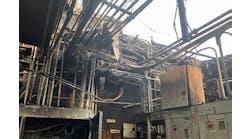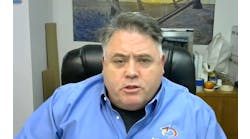Transforming Terminal Automation operations on a grand scale
“This is the only way to achieve significant increases in efficiencies.” Buckeye Partners’ Angel Matos detailed the complex system of solutions implemented as part of the pipeline operator’s digital transformation.
As one of the largest independent liquid petroleum pipeline operators in the world, with 6,000 miles of pipeline, 115 terminals and 118-million-barrel tank capacity, Buckeye Partners knew their digital transformation was going to be complicated. And they knew it was necessary to stay competitive.
“We were struggling with the technology used to support terminal automation,” explained Angel Matos, Buckeye Partners’ senior manager of terminal automation applications, during his Automation Fair At Home case-study presentation. Matos, who oversees Terminal Automation project planning and execution across all of his company’s oil-and-gas distribution terminals, explained how his team was reliant on systems that, quite frankly, were not intended for the modern scope of automation.
So they set goals. The senior manager and his team wanted to quicken IT/OT convergence across their facilities. They wanted to ensure longevity of the tools and systems they implemented (always a challenge in harsh environments). They wanted fewer moving parts and more-functional industrial computers at their disposal.
Central to the project was a shift to predictive maintenance—collecting data at the edge, integrating with hybrid cloud operations, and using real-time analytics and machine-learning models. The efficiency goals they envisioned would hinge on strategic platform monitoring/protection. Some of the IT and OT workloads would be automated, freeing up personnel to tackle more important tasks. The system would have to be scalable for additional applications down the road, and be able to fully integrate with the larger terminal operations.
No sweat, right?
To accomplish these goals the Buckeye team envisioned a pilot program at their South Texas Gateway Terminal. They sought out hardware and software solutions that would optimize disaster-recovery efforts, and make OT more manageable. They needed a way to corral the 36 different applications they manage. They wanted a better system to roll out upgrades. (“We had a lot of flavors of PCs,” joked Matos.) And they demanded systems that offered 24/7 service and support programs.
Then Matos and his colleagues went shopping. They met with vendors. They attended conferences to collect insights from peers and competitors and solution providers.
The solutions they ultimately selected and implemented matched the complexity of the project. Matos explained how control systems and software from Rockwell Automation, together with fault-tolerant computing platforms from Stratus Technologies, proved central to the campaign. These included PlantPAx DCS (with virtualization) and ControlLogix systems, together with FactoryTalk VantagePoint EMI and ThinManager software from Rockwell Automation complemented by ftServer and ztC Edge fault-tolerant computers from Stratus.
“This was all about the end-user experience,” he said. “We wanted to make sure they were receptive and comfortable with these decisions.”
The project was not without its challenges, of course. First, there was a reservation to change among many stakeholders. “It can be difficult for the human mind to adapt as quickly as the technology,” admitted Matos with a tone that indicated how challenging this was to overcome. There were stumbles with maintaining synergy among project-management teams and the IT/OT crews, likewise with the systems integrators and end users. Complexity with the network-design process required regular, lengthy meetings. And, frankly, the IT and OT sides came to the project with different goals. “Each discipline has to understand the other’s desires. And we have to serve up a solution that can marry both of those.”
Still, the pilot project was a success. A big success, validated by the fact that, as Matos explained, Buckeye Partners is now on the journey to a complete rollout of similar projects across their installed base.
“This is the only way to achieve a significant increases in efficiencies,” he stressed. “Our response times are quicker. In the event of a failure we know what to do. We have good integration across our systems. We are planning for more digital-transformation efforts.”
The editors of Control, Control Design and Smart Industry are providing coverage of Automation Fair At Home, bringing you breaking news, innovations and insights from the virtual event. Once Automation Fair At Home is over, the editors will put together an event report featuring the top news. Pre-order your copy today.





